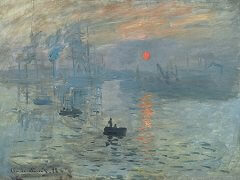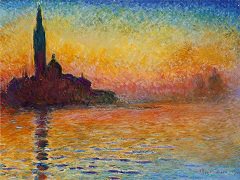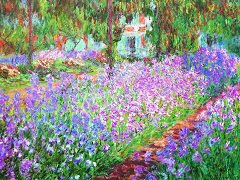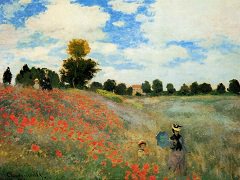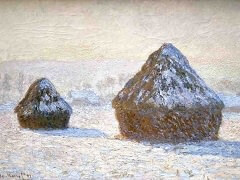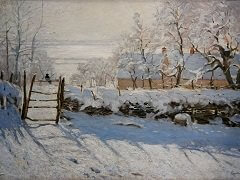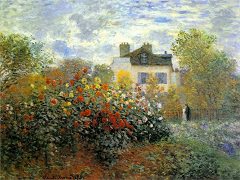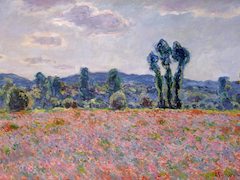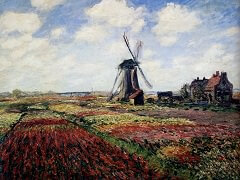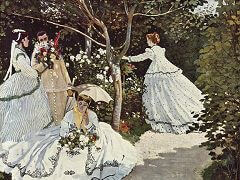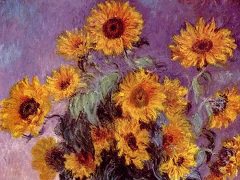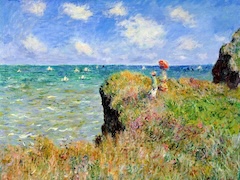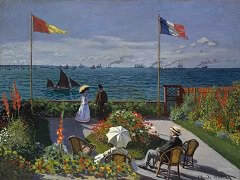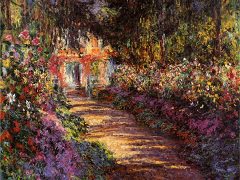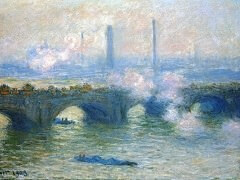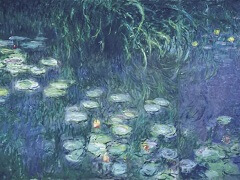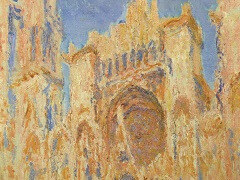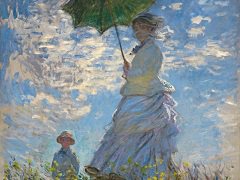Path Through the Corn at Pourville, 1882 by Claude Monet
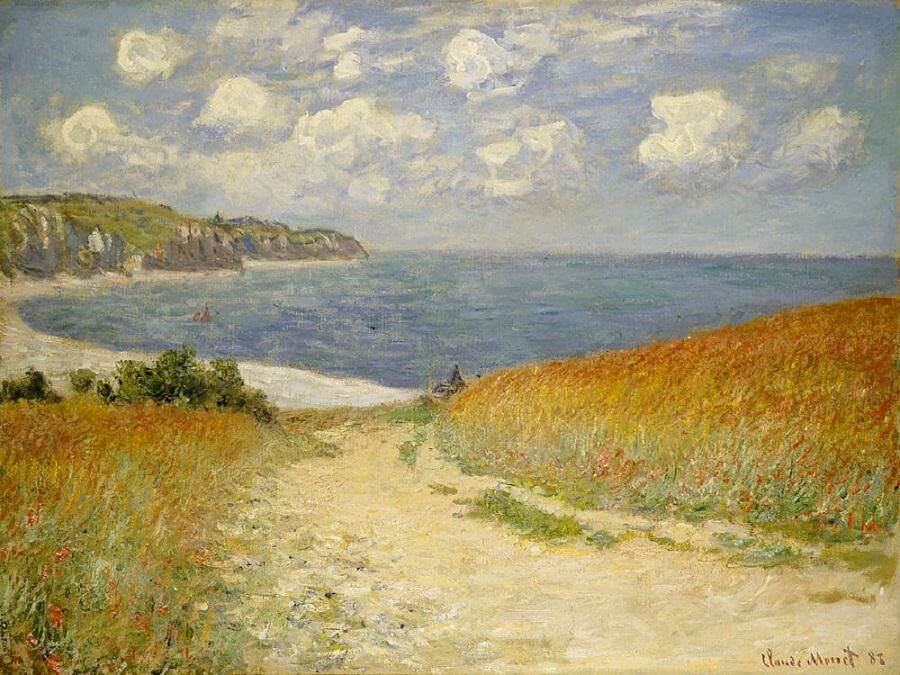
Durand-Ruel, the great patron of the Impressionist artists, economically supported Monet, Camille Pissarro and
Edouard Manet during their trip to London in 1870, a trip that continued with their stay in the Netherlands in the following year.
The English landscape did not impress Monet; and in fact he painted very few English landscapes, except those depicting the Houses of Parliament and
Waterloo Bridge, a subject that he repeated - in a more enthusiastic way.
What is most noticeable about this painting are the strong, bright colors. The blue of the sea is reminiscent of some of Monet's paintings from the Mediterranean. What he set out to do was to
capture the effects of a brilliant summer's day on the beach landscape.
Path Through the Corn at Pourville has strong lines that form horizontals and verticals. In the picture the curved path not only draws the eye towards the sea but also provides a vertical
curve that meets the sand and continues to the horizon. This balances the horizontal of the sea and cliff.

